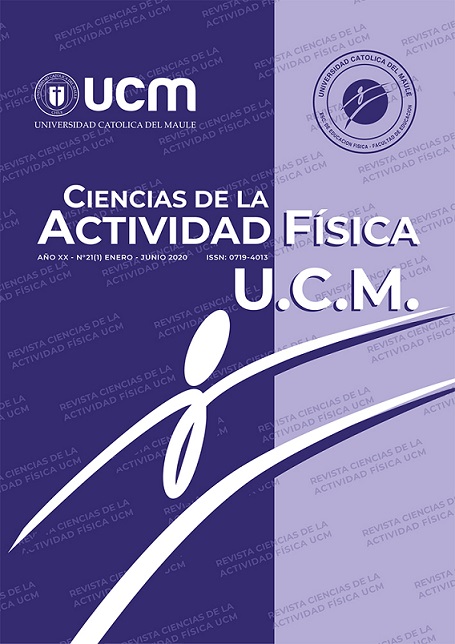Ae, M., Ito, A., & Suzuki, M. (1992). The men’s 100 meters. Scientific Research Project at the III World Championship in Athletics, Tokyo 1991. New Studies in Athletics, 7(1), 47-52.
Bae, Y.S. (2011). Biomechanics Research Project Report in the IAAF World Championships, Daegu 2011. Recuperado de http://www.jaaf.or.jp/t-f/pdf/Daegu2011.pdf
Bezodis, I. N., Salo, A. I. T., & Kerwin, D. G. (2008). A longitudinal case study of step characteristics in a world class sprint athlete. Paper presented at the ISBS Conference, Seoul, Korea.
Brüggemann, G. P., Arampatzis, A., Emrich, F., & Potthast, W. (2008). Biomechanics of double transtibial amputee sprinting using dedicated sprinting prostheses. Sports Technology, 1(4-5), 220-227. DOI:https://doi.org/10.1002/jst.63
Brüggemann, G. P., Koszewski, D., & Muller, H. (1999). Biomechanical Research Project Athens 1997. Final Report. Oxford, United Kingdom: Meyer & Meyer.
Buckley, J. G. (2000). Biomechanical adaptations of transtibial amputee sprinting in athletes using dedicated prostheses. Clinical Biomechanics (Bristol, Avon), 15(5), 352-358. DOI: 10.1016/s0268-0033(99)00094-7
Codina, M. (2004). La discapacidad visual. En M. A. Torralba (Ed.), Atletismo adaptado: para personas ciegas y deficientes visuales (pp. 15-27). Barcelona: Paidotribo.
Chow, J. & Chae, W. (2007). Kinematic Analysis of the 100-m wheelchair race. Journal of Biomechanics, 40(11), 2564-2568. DOI: 10.1016/j.jbiomech.2006.12.003
Dyson, G. (1978). Mecánica del atletismo. Madrid: Consejo Superior de Deportes.
Espirito-Santo, H., & Daniel, F. B. (2015). Calcular e apresentar tamanhos do efeito em trabalhos científicos (1): As limitações do p < 0,05 na análise de diferenças de médias de dois grupos [Folha de cálculo suplementar]. Revista Portuguesa de Investigação Comportamental e Social, 1(1), 3-16. Recuperado de http://repositorio.ismt.pt/handle/123456789/429
Ferro, A., Graupera, J. L., Blaso, M. I., Barceló, O., & Antón, E. (1996). Análisis Cinemático de la Carrera en Velocistas Ciegos. En J. L. Hernandez & M. A. Gutiérrez (Eds.), Análisis Biomecánico de las técnicas deportivas. Carrera de velocistas ciegos, lanzamiento de jabalina y salto de altura. Madrid: Ministério de Educación y Cultura y Consejo Superior de Deportes.
Graubner, R., & Nixdorf, E. (2011). Biomechanical Analysis of the sprint and hurdle events of the 2009 IAAF World Championships in athletics. New Studies in Athletics, 26(1/2), 19-53. Recuperado de http://www.meathathletics.ie/devathletes/pdf/Biomechanics%20of%20Sprints.pdf
Guzmán, C. A. (2013). Bolt vs Gay: velocidad, zancada y potencia en la carrera de los 100 metros. EFDeportes.com, 18(182). Recuperado de https://www.efdeportes.com/efd182/bolt-vs-gay-en-la-carrera-de-100-metros.htm
Hay, J. G. (1985). The Biomechanics of Sports Techniques. Englewood Cliffs: Prentice Hall.
International Paralympic Committee. (2019). Research Report - IPC Athletics Classification Project for Physical Impairment. Recuperado de https://www.paralympic.org/athletics/classification
Ito, A., Ishikawa, M., Isolehto, J., & Kom, P. V. (2006). Changes in the step width, step length, and step frequency of the world’s top sprinters during the 100 metres. New Studies in Athletics, 21(3), 35-39. Recuperado de http://centrostudilombardia.com/wp-content/uploads/IAAF-Corsa-Velocita/2006-Changes-in-the-step-width-step-lenght-and-step-frequency-in-100-m.pdf
Krzysztof, M., & Mero, A. (2013). A kinematics analysis of three best 100 m performances ever. Journal of Human Kinetics, 36, 149-160. DOI: 10.2478/hukin-2013-0015
Latorre, P. A. (2003). Análisis biomecánico del corredor de fondo. Red: revista de entrenamiento deportivo, 17(4), 23-32.
Letzelter, S. (2006). The development of velocity and acceleration in sprints. A comparison of elite and juvenile female sprinters. New Studies in Athletics, 21(3), 15-22. Recuperado de https://www.semanticscholar.org/paper/The-development-of-velocity-and-acceleration-in-Letzelter/c0b0d7879ba0cbca1df9a397629da6da339f79ff
Mackala, K. (2007). Optimisation of performance through kinematic analysis of the different phases of the 100 meters. New Studies in Athletics, 22(2), 7-16. Recuperado de https://www.researchgate.net/profile/Mackala_Krzysztof/publication/282522045_Structural_asymmetry_of_
foot_arch_formation_in_early_school-age_children/links/57762d1208aeb9427e275683.pdf
Mann, R., & Herman, J. (1985). Kinematic Analysis of Olympic Sprint Performance: Men's 200 Meters. International Journal of Sport Biomechanics, 1(2), 151-162. a href="DOI: 10.1123/ijsb.1.2.151
Mero, A., & Komi, P. V. (1985). Effects of supramaximal velocity on biomechanical variables in sprinting. International Journal of Sport Biomechanics, 1(3), 240-252. DOI: https://doi.org/10.1123/ijsb.1.3.240
Morin, J.B., Bourdin, M., Edouard, P., Peyrot, N., Samozino, P., & Lacour, J.R. (2012). Mechanical determinants of 100-m sprint running performance. European Journal of Applied Physiology, 112(11), 3921-3930. DOI: 10.1007/s00421-012-2379-8
Nolan, L., Patritti, B. L., & Simpson, K. J. (2006). A biomechanical analysis of the long-jump technique of elite female amputee athletes. Medicine and Science in Sports and Exercise, 38(10), 1829-1835. DOI: 10.1249/01.mss.0000230211.60957.2e
Padullés, J. M., & Torralba, M. A. (2009). Análisis de la carrera de 100 m. de atletas paralímpicos de la categoría amputados tibiales (Oscar Pistorius). Red: revista de entrenamiento deportivo, 23(2), 21-27.
Pascua, M. (1998). Carreras de velocidad. En M. Pascua, F. Gil, & J. Marín (Eds.), Atletismo I, carreras y marcha (pp. 25-91). Madrid: Real Federación Española de Atletismo.
Rice, I., Hettinga, F. J., Laferrier, J., Sporner, M. L., Heiner, C. M., Burkett, B., & Cooper, R. A. (2011). Biomechanics. En Y. C. Vanlandewijck & W. R. Thompson (Eds.), The Paralympic Athlete: Handbook of Sports Medicine and Science. (pp. 33-50). Oxford: International Olympic Committee.
Rosa, A., & Ochaíta, E. (1993). Psicología de la ceguera. Madrid: Alianza.
Schiffer, J. (2009). The Sprints. New Studies in Athletics, 24(1), 7-17.
Swansea. (2014). IPC Athletics European Championships | International Paralympic Committee. Recuperado de https://www.paralympic.org/swansea-2014
Torralba Jordán, M. A., Padullés Riu, J. M., Losada López, J. L., & López del Amo, J. L. (2016). Alternativa ecológica en la evaluación del salto de longitud de atletas paralímpicos. Cuadernos de Psicología del Deporte, 16(1), 69-76. Recuperado de http://scielo.isciii.es/scielo.php?script=sci_arttext&pid=S1578-84232016000100006&nrm=iso
Torralba, M. A., Padullés, J. M., Braz Vieira, M., & Olson, H. (2014). La carrera de velocidad en personas con discapacidad visual. Revista Iberoamericana de Ciencias del Deporte, 3(3), 14-23. DOI: 10.1136/bmjsem-2017-0002522


 https://orcid.org/0000-0002-0951-2008
https://orcid.org/0000-0002-0951-2008
